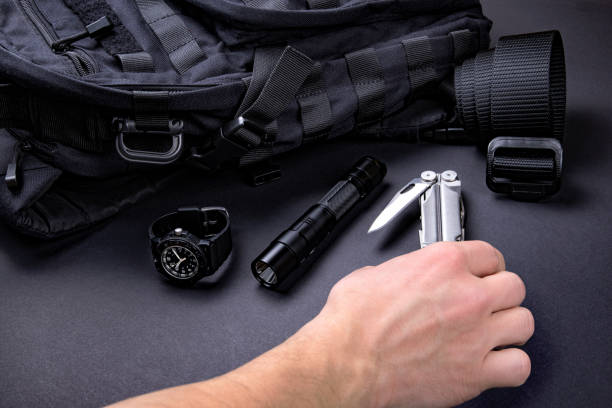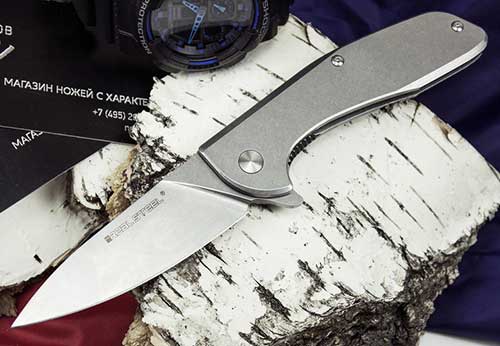Folding knives are a conscious compromise, especially when carried for personal protection. In addition to being weaker than fixed blades, they are also significantly slower to engage in an emergency.
Fixed blades are ready to go as soon as they come out of the sheath, while folders must be removed and then opened before they are fully operational. And since knives are only really useful in the event of extreme contact at very close range, this should all happen within a few short seconds.
If you’re carrying a Folder without even thinking about using it as a defensive weapon, you should still be able to quickly and securely reach and open it. The path to this skill begins with a clear understanding of the dynamics that affect the process.
Getting the folder ready starts with putting your hand on the knife, so carrying space is critical. Remember this important point. The most practical option is the front trouser pocket on the dominant side. Ideally, your knife should be tucked into your pocket so that it stays in the back of your pocket at all times, next to the outer seam of your trousers.
This consistently orients the knife and allows full use of the rest of the pocket. If you suspect trouble, then by accidentally placing your thumb in your pocket, you can also discreetly prepare your knife for work.
If you do not have a front carrying pocket, then the best alternative is inside the belt (or waist belt) at the level of the appendix on the right side.

Clip position
Serious tactical folders have clips that hold them firmly in place and are instantly accessible at the top of the pocket. The way this clip orients the Damascus Pocket knife has a significant impact on your pulling mechanics and speed.
Simply put, there are two options: A clip attached to the back of the handle orients the knife “tip down”, and a clip attached to the hinged end of the handle orients the knife “tip-up”.
Both styles of carrying support quick positive access, but the clip-on swivel carry allows you to keep the knife in your pocket with the same basic grip needed to open and use the knife.
On the contrary, carrying on a clip located on the back of the handle requires you to intercept the knife in your hand after extraction, before opening the blade. It takes time and requires complex motor skills in stressful situations.
Although this is certainly a skill that is developed by a constant process of training. The special “deep pocket” style clips located at the end of the handle are certainly invisible, but they also make it difficult to quickly remove and bring the knife into position.
Blade opening method
It is important to remember that opening the folder with one hand usually requires an additional element on the blade, which allows the thumb or small finger to gain leverage. Whether it’s a hole in the blade, a stud, a peg, or another element, the pressure on it overcomes the blade stop (the pressure of the locking mechanism to keep the blade closed) and brings it into position.
Holes and studs generally offer the best leverage and do not require clutch control during the opening process. Finger thrust, strong movement, and the blade are ready to go. Under stress, the simpler the better.
It is also useful to know that when you press different elements of the lock, different pressure is exerted on the blade. Back locks have very strong springs, while liner locks, compression locks, and pivot locks are much softer and easier to open.

THE OPTIMAL ALGORITHM FOR OPENING A FOLDER IN AN EXTREME SITUATION
Given all these features, the instant opening of the folder in an extreme situation should happen something like this:
- Stick your thumb in your pocket and feel for the knife.
- Lower it deeper to place your thumb along the plane of the handle that faces your body.
- Place your index finger under the tip of the clip on the outside of the pocket.
- Pull the knife straight out of your pocket by raising your elbow (important – the elbow works, not the hand).
- Twist your fingers around the handle, securing your fingertips to the clip.
- Move your thumb over the hole, stud, or peg.
- Drive your thumb straight forward to bring the blade into the open position.
- Stand in a protective pose – that’s it, you are ready for an extreme situation.
If this process seems a little complicated, then you are right. Bringing the folder into position in response to a potential threat requires you to perform complex motor skills with a mechanical device, and this will have to be done under high stress.
The best way to tackle this challenge is to choose the right knife and practice hard. You know, there are no miracles and this is the only way to ensure that your knife is actually in your hand when you need it most.
read more
How does Professional Cleaning Services In El Paso Respond?
